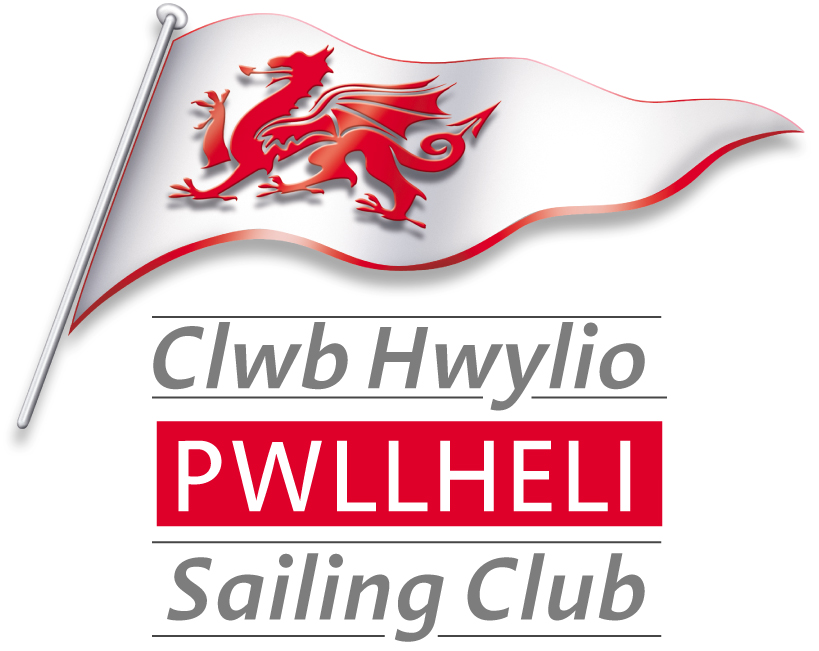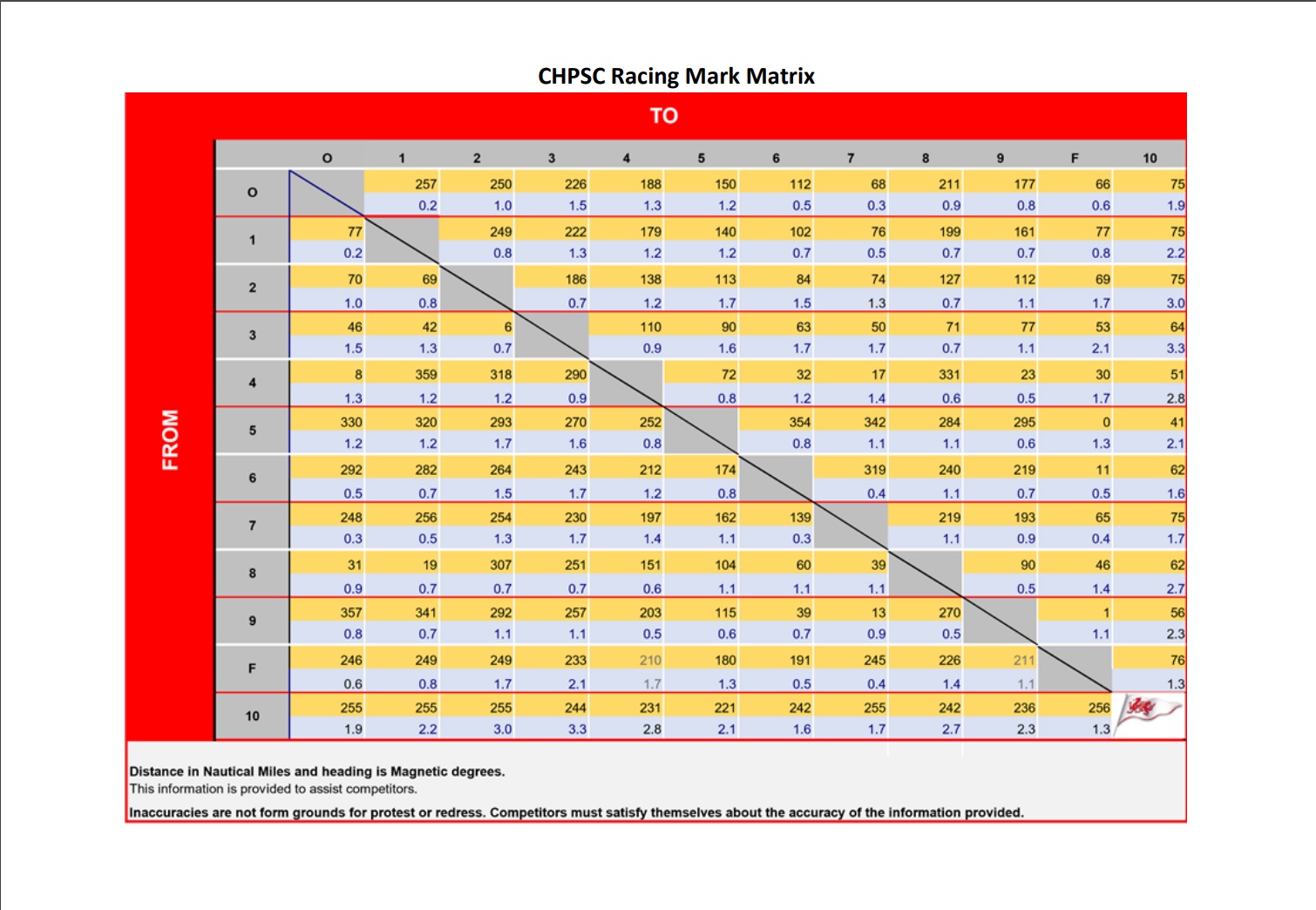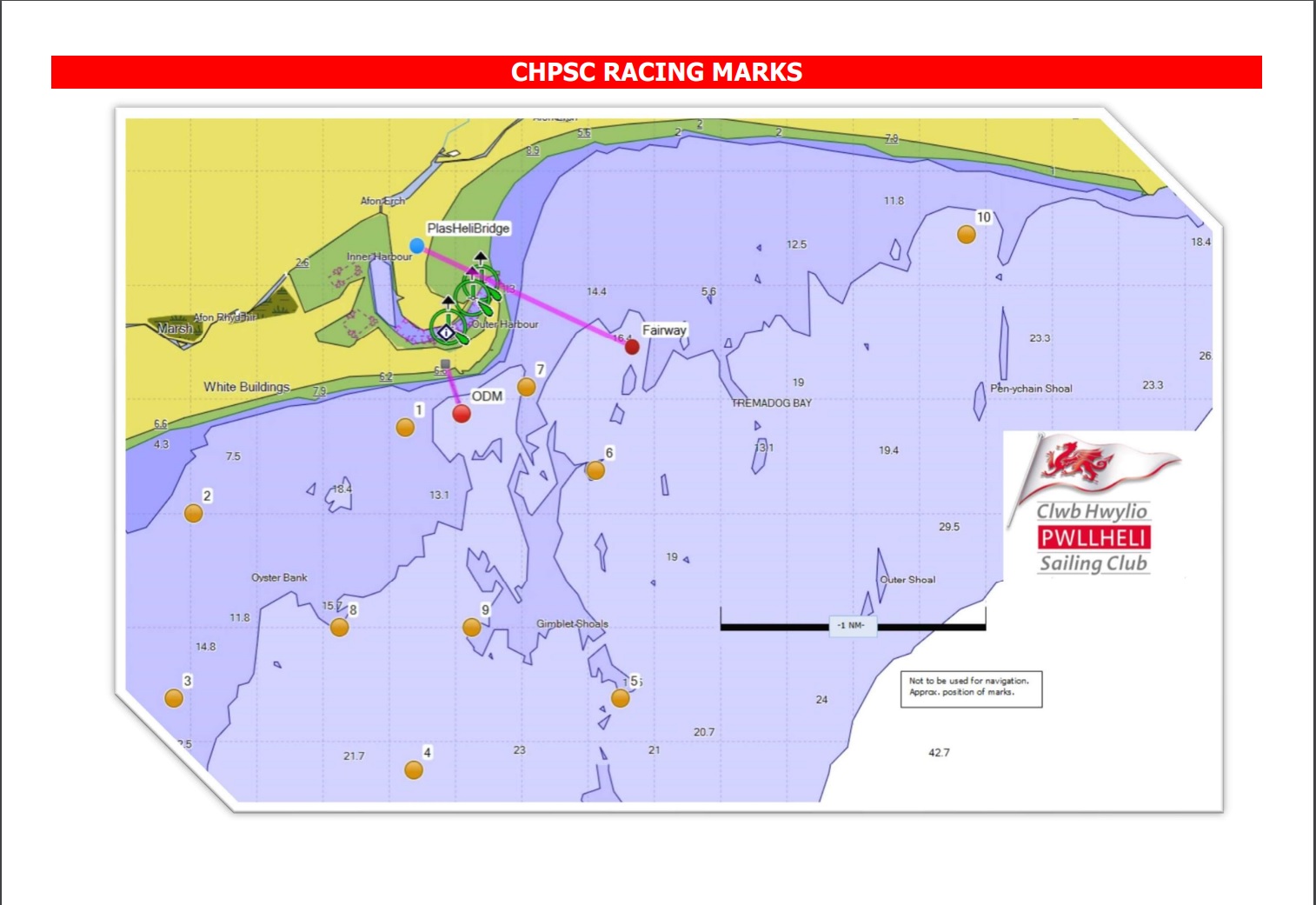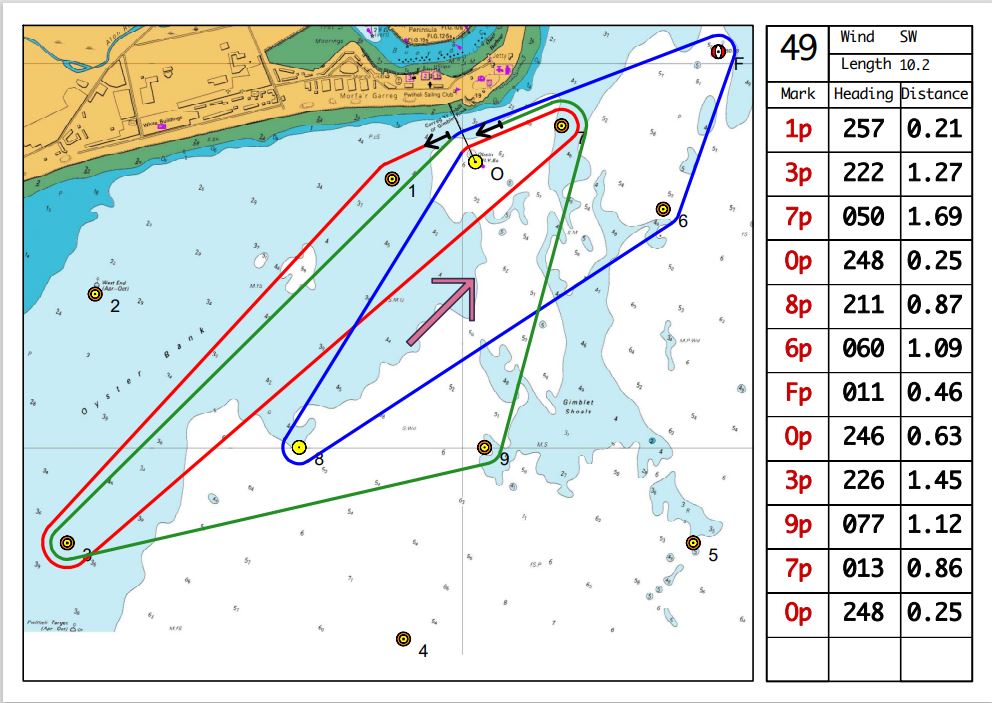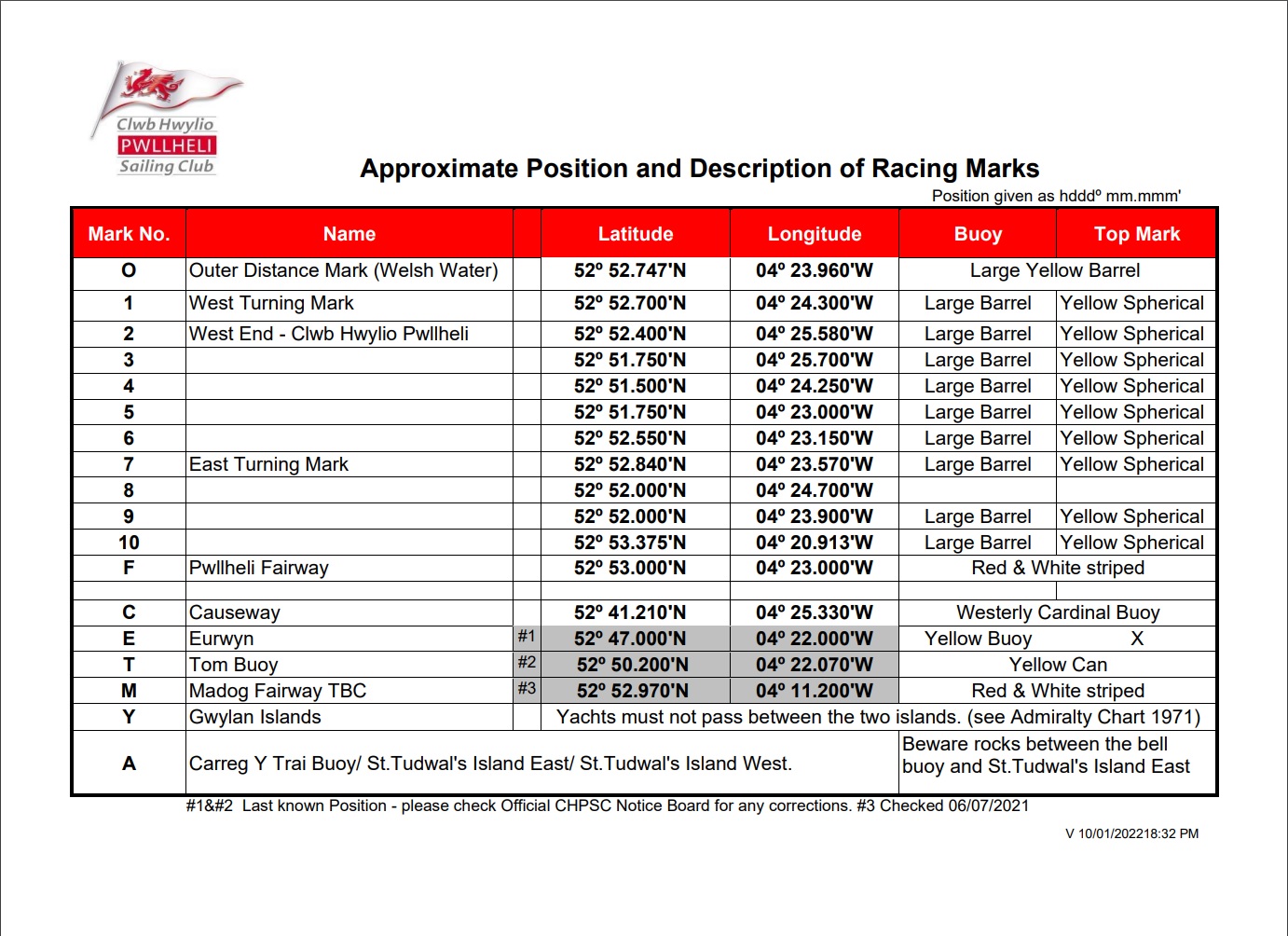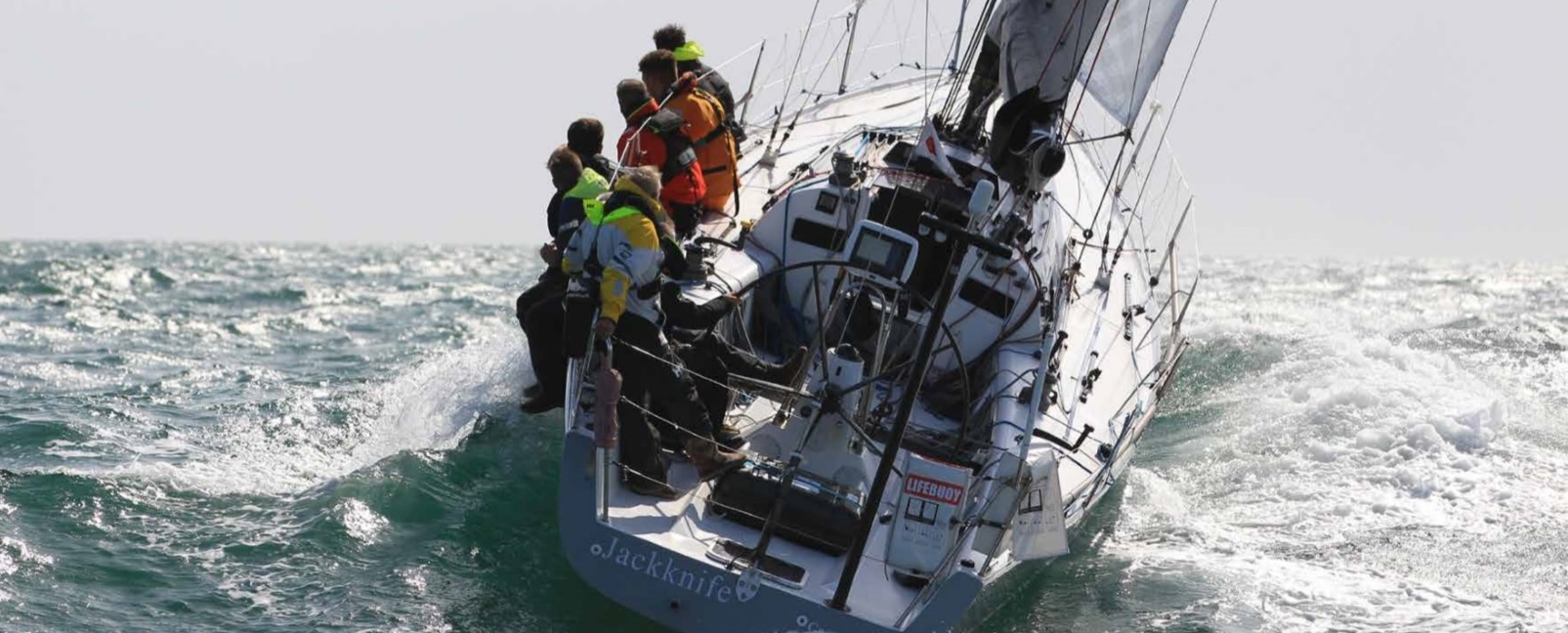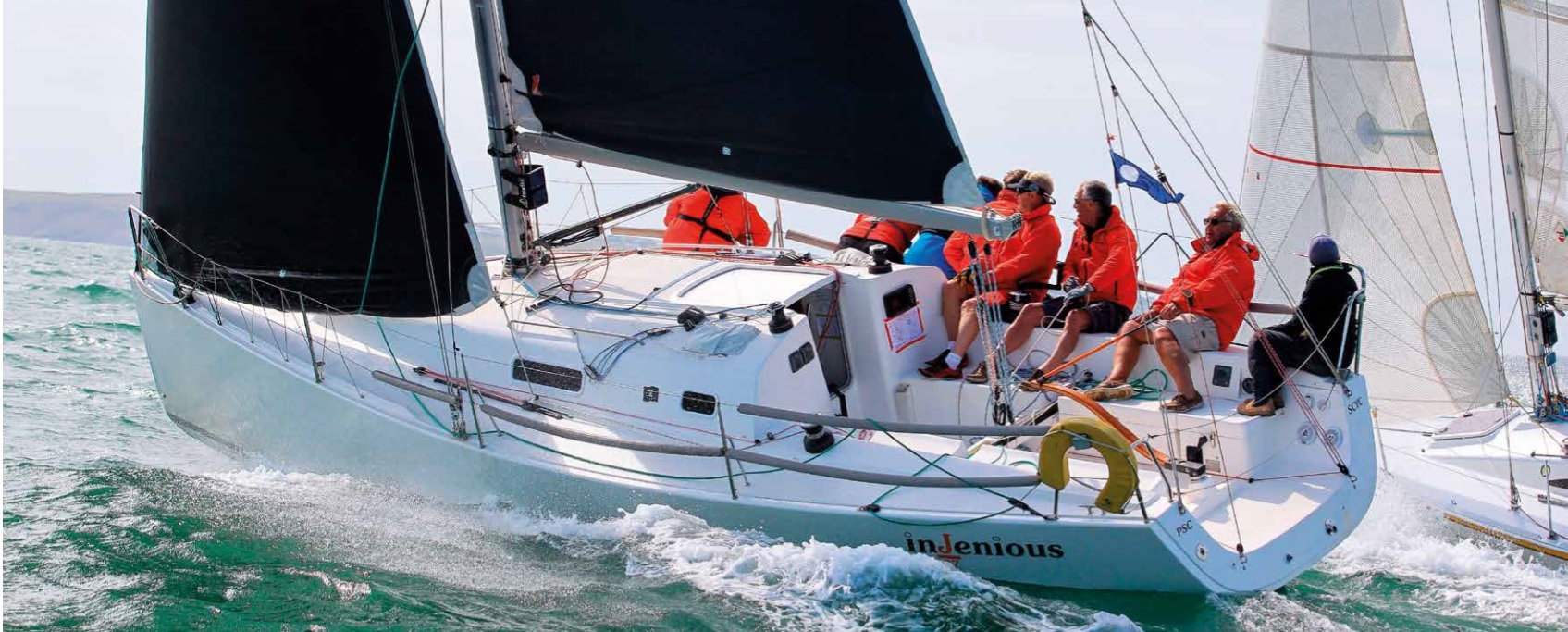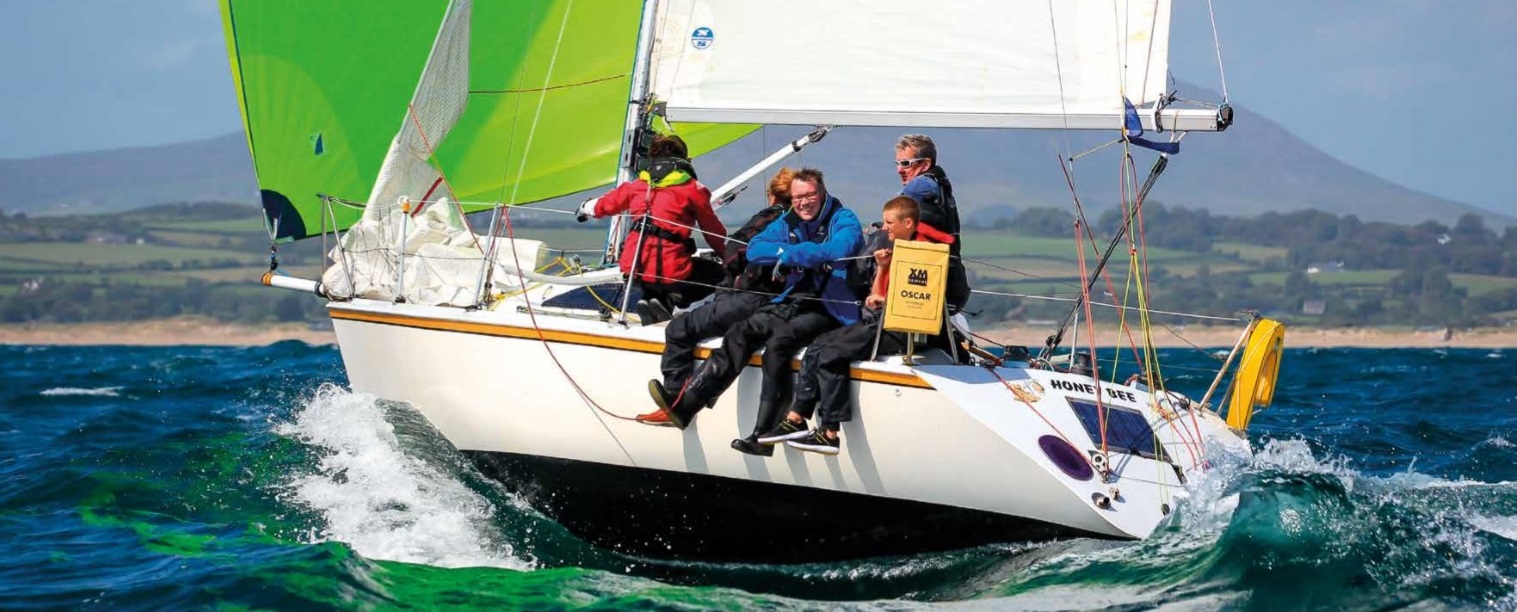
This iconic 275-mile race takes place in the alternate years to the Round Ireland race, and is an excellent opportunity for offshore sailors to dip their toes into the long distance Irish offshore racing scene, in a race run by the National Yacht Club, in conjunction with ISORA and RORC.
After one to many pints in Plas Heli, I elected to enter the two-handed class with Phil Jackson (Flatly) who agreed to the roles of Co- Skipper, chef and chief kite trimmer.
Preparations for the race were hampered by strong NE winds, with damage to several competing boats on the NYC pontoons, which in hindsight certainly had an impact on the start of our race, with little time to relax in the preceding 24 hours, and having to take refuge in the NYC bar to escape the strong winds.
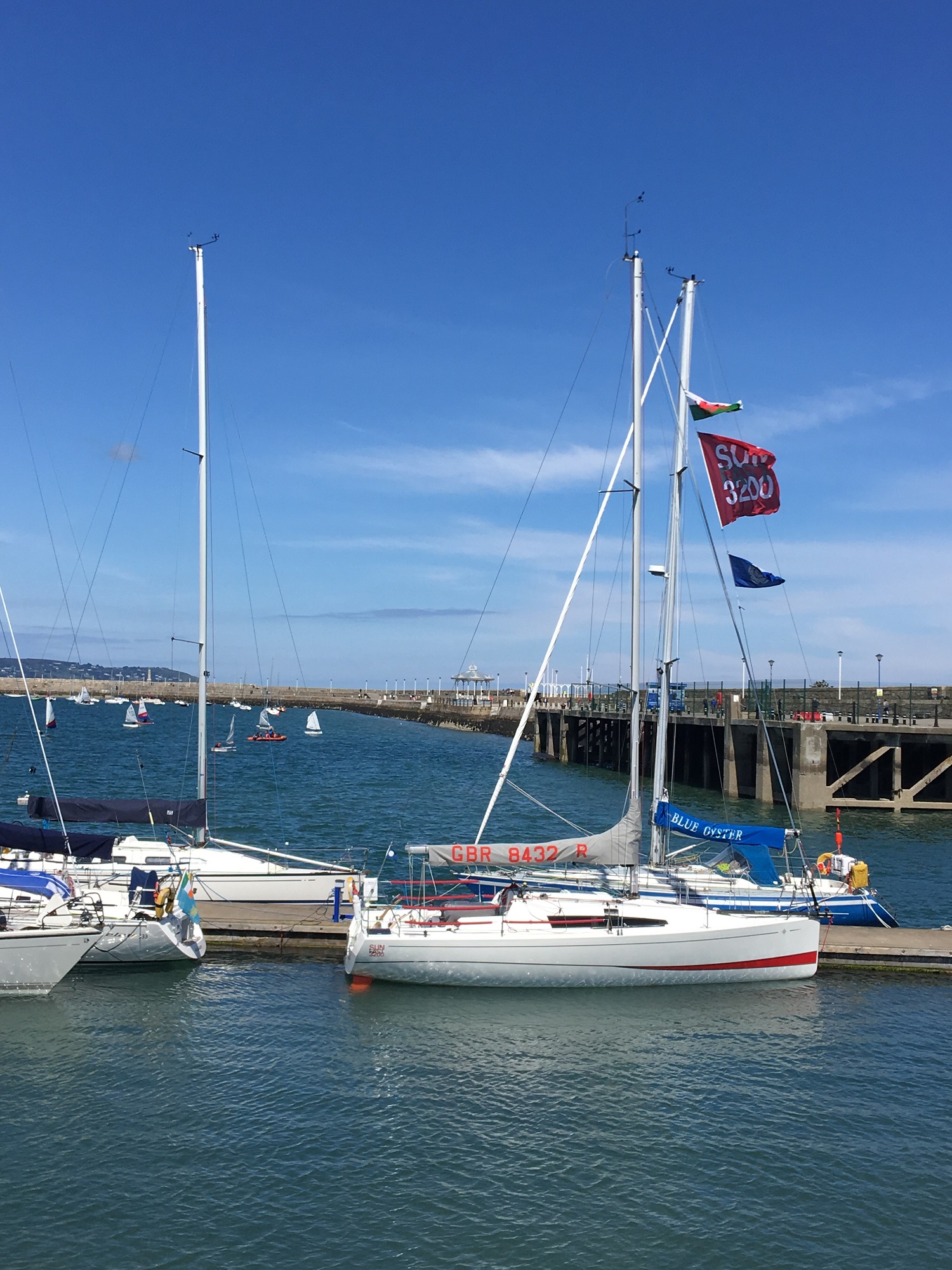 “Jac Y Do” on the NYC pontoons Dun Laoghaire
“Jac Y Do” on the NYC pontoons Dun Laoghaire
Only an hour or two before we left the pontoons, the wind was a gusty 25kt Northerly, and we made a decision to start under white sails or our heavy hybrid A3/A4 Spinnaker, (which due to our impeccable preparation, had never been out of the bag!)
The forecast for the first 12 hours was for the Northerly wind over the race area to slowly moderate and ultimately backing to the NW - overall a great forecast, and one that really suited “Jac Y Do”
As we left the safety of the harbour, it was important to just sail and try and relax pre-start, make sure our lines and sheets were rigged correctly and required sails ready. We carry four Jibs and 4 spinnakers and were ready to use all of them!
As we approached the start, the wind dropped significantly, down to a steady 10-15kts. Phil was keen to get the sails sorted for the start and I made Skipper mistake number 1 – lulled into a false sense of security with the sudden flat seas and lighter breeze, I asked him to rig our huge 95m A2 spinnaker.
We made a decision to start at the backend of the fleet to save any unnecessary manoeuvring (hard work under spinnaker when two handed) and to look at the gybe angles and sail selections of the boats ahead.
We were absolutely flying under the A2, often recording 10 kts boat speed and keeping up very nicely with the two-handed fleet, who all elected to maintain port gybe longer and stay offshore. It was in the bag!
It wasn’t long before the wind was back up above 20kts, and gusting to 30kts, but we managed to stay on a steady 150 degrees apparent wind angle, giving an apparent wind of 15- 20 kts. Which was manageable but in reality, probably too much for the big A2 shorthanded. There was no chance of using the autopilot, and the workload was very high for two people
We would need to think about a sail change soon, as it was becoming a struggle to keep control in the gusts, concentrating on not going to deep and avoiding gybing and were getting very pressed when the wind veered in the gusts. I decided that the sensible thing would be to gybe once over the banks, and then head towards the flatter water inshore and consider a sail change. Phil bravely went forward to double check the sheets were ready for an outside gybe, and at that point a monster gust hit, and we had a most spectacular crash gybe, straight into a broach, putting the bows (and Phil) under water and myself pinned under the tiller! I couldn’t get out to ease any sheets, and ultimately as the boat came back up (luckily with Phil still on the bows) the spinnaker did its own thing and wrapped around the forestay about 10 times as tight as a furled sail! This was unfortunate as our furled jib was under the now self-furled spinnaker!
I knew at this point it was survival, and our race at this very early stage was effectively over. Boats on both sides of us suffered issues with the same gust, with two handed J109 “Wakey Wakey” trawling its kite under the boat - which is not good.
After getting the boat back on its feet, we gybed onto a more direct course, and continued under mainsail alone making 7 kts, whilst we recovered from the shock - (at this point in our races, Phil always makes a brew, so we had two) and worked out a plan to get the spinnaker down, and allow us to use anther foresail. With both of us working alternately for about 5 hours, unwrapping the spinnaker, with it often re-wrapping, having to gybe either side of downwind to unwrap the sail one wind at a time, we finally got the spinnaker down, and below deck, with the top 6m, wound as tight as a drum! (remarkably when we were able to unwind it in Dingle after the race it was undamaged! A tribute to it construction)
Ready to unfurl the heavy Jib, we found we had lost both Jib sheets! … to this day we have no idea where they went, as they were attached to the jib clew, and secured on both sheet winches! Remarkably, we were still making reasonable progress, though had slipped to the back of the fleet. After a brief conference (over another brew – that boy can sup tea) - we decided to continue through the night under white sails and make every effort to complete the race and see what happened.
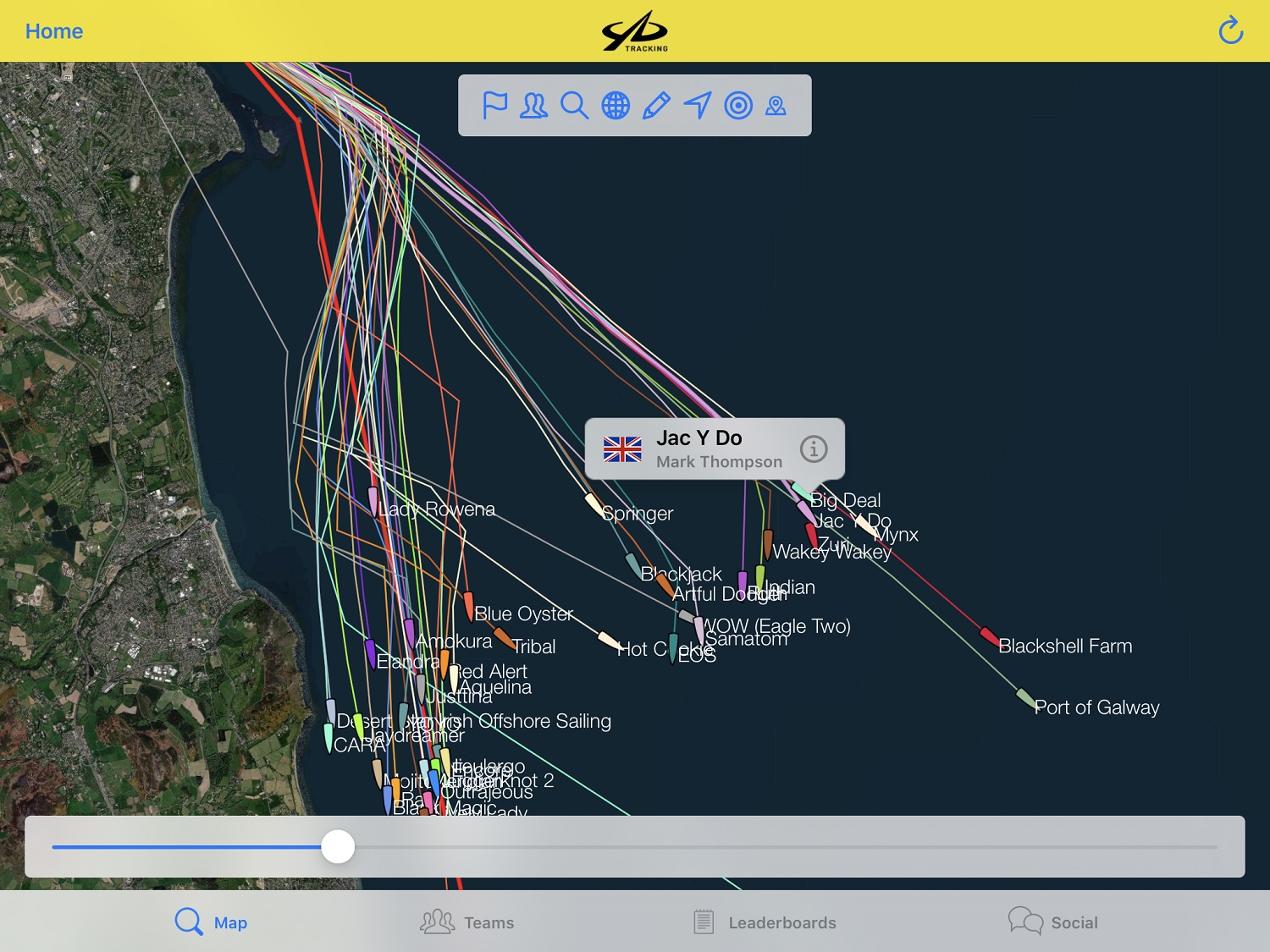 YB - split fleet one hour into the race
YB - split fleet one hour into the race
A difficult night, but we managed to make the tidal gate at Tuskar and were on alert after a pan call to help a fellow competitor, (Justtina - Soleil 34) who had lost steering close to Tuskar after a massive crash gybe, and another (Samatom) who was diverting to Dunmore with gear failure. It seemed we weren’t the only boat who had issues!
Once the RNLI reached the stricken boat at Tuskar, we concentrated on getting as much rest through the night as we could, though both of us remained on deck.
With dawn rising and the promised wind shift, we launched the code zero, which also gave us an opportunity to change the Jib for a bigger one, with the forecast showing the wind dropping towards Baltimore. Under the A0 we started to make good progress and overtook some of our competitors which really lifted our spirits. Sadly, one of the issues with this big sail is the apparent wind going forward as speed builds, and it’s easy to get over pressed if the wind builds. Bearing away was not really an option, so it had to come down, and sadly during the furl, the mechanism fell to bits! So, we had to drop it like a spinnaker and shove it down below – no easy feat with a laminate sail. We were getting a cabin full of un-useable sails now! As evening drew in, we had to make a few tacks to keep out of the Fastnet separation zone, but really enjoyed the sail as we rounded this iconic sailing waypoint!
Heading inshore after rounding, we had a good laugh when Phil mixed up a fellow competitors mast light for a car’s headlights! I ignored his calls to crash tack -Delirium had set in!
As dawn broke we were finally heading up the bouncy Atlantic coast, and had got to the front of the rear pack, though unfortunately we got hammered by the wind shift, and whilst the boats ahead got to the Skelligs on one tack, we had a tough beat, which cost us another 3-4 hours. This was hard work on the helm, and not much better on the heads (according to Phil)
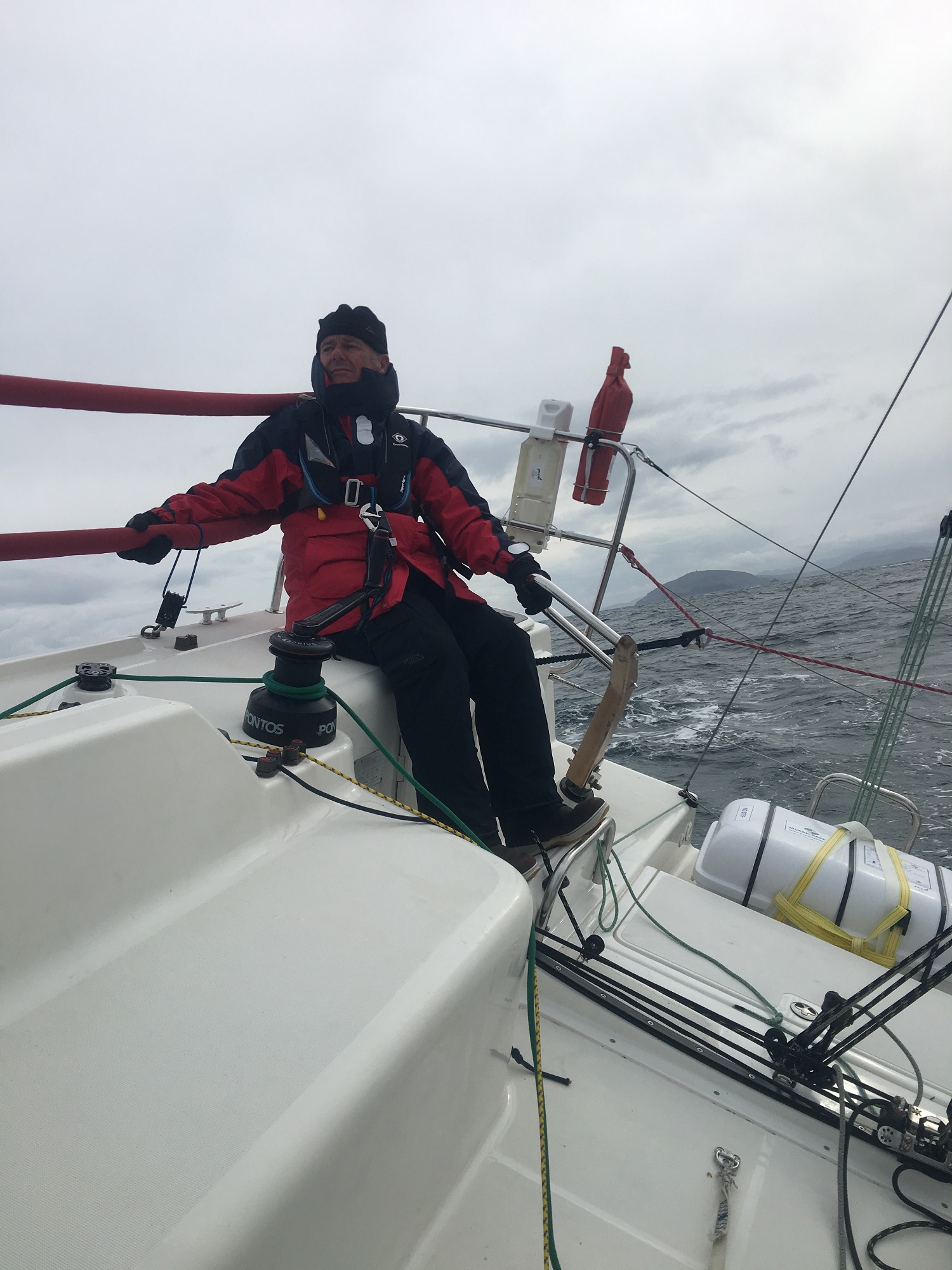
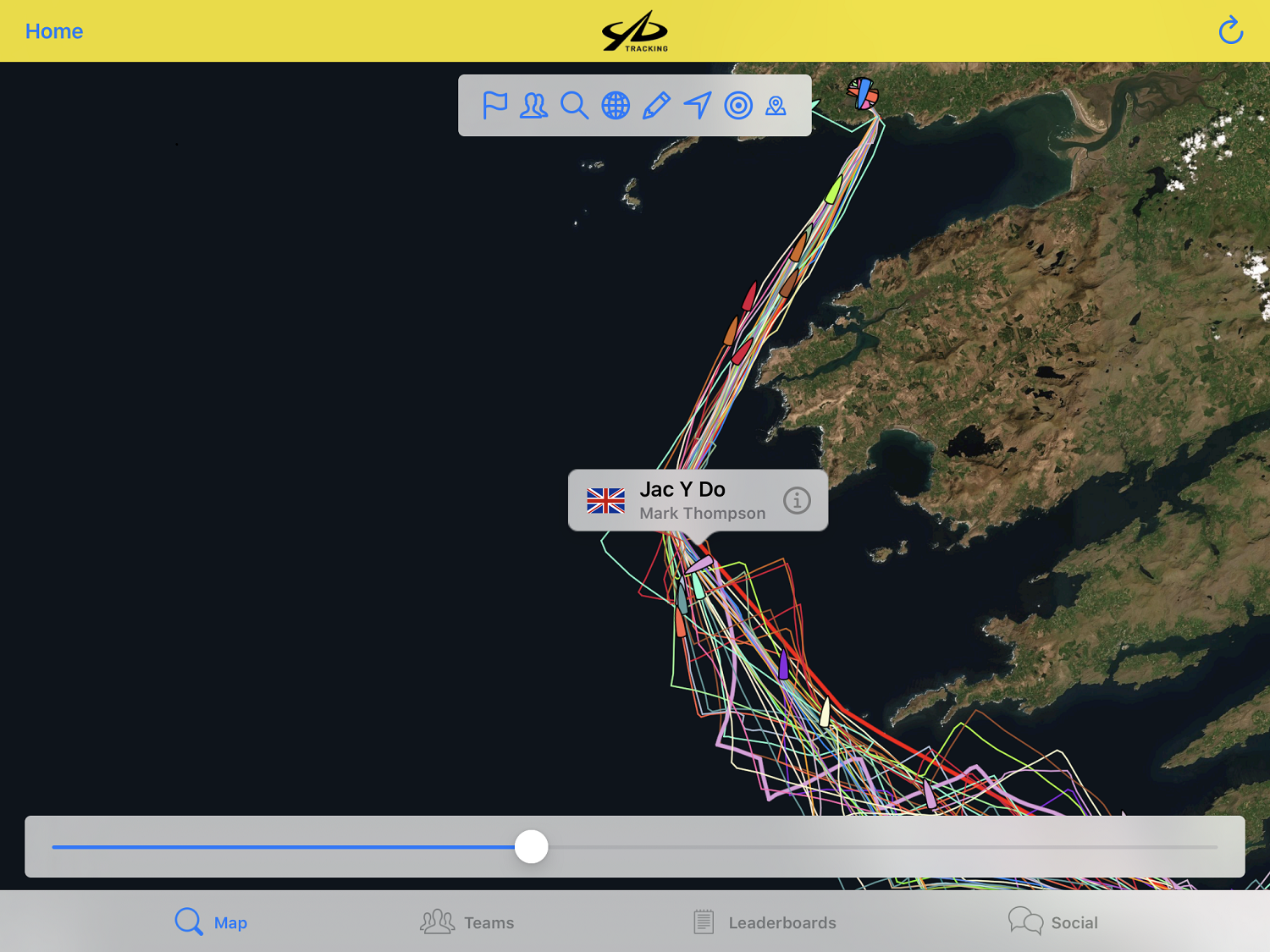 YB map showing the split groups up the Atlantic coast
YB map showing the split groups up the Atlantic coast
Finally getting to Skellig on a lovely bright morning the wind just shut down! Totally! Drifting in company with fellow Sunfast Rónán Ó Siochrú’s Desert Star, we just couldn’t believe it!
Finally, after a frustrating hour going around in circles, we got away on the weakest of zephyrs and avoided having to drop anchor to stop hitting the rocks!
With a decent wind building and a favourable angle, we launched the A5 and had a really spectacular run to the finish at Dingle, but whether we saw Funghi the dolphin is debateable! (less of a debate after several pints)
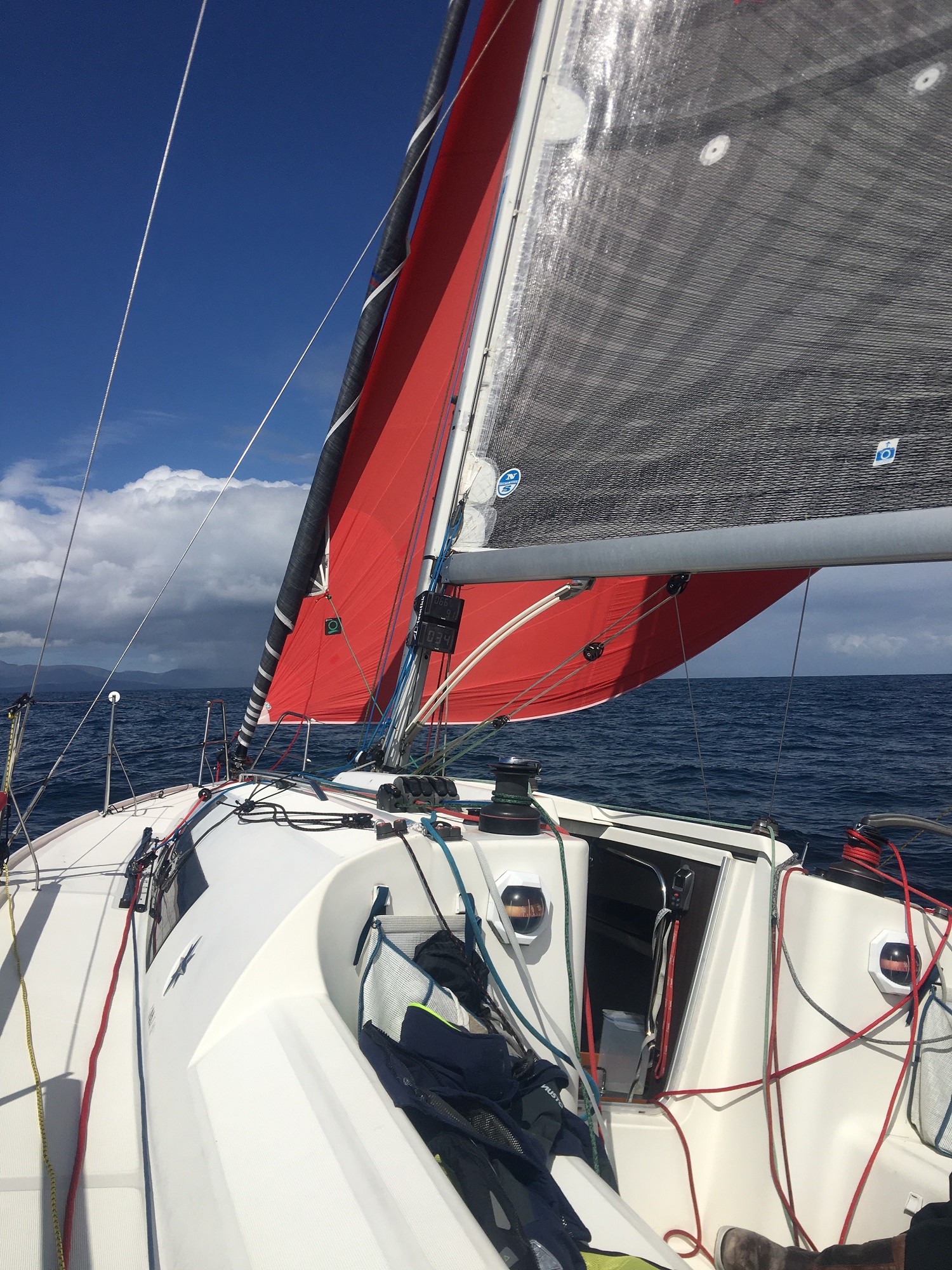
We crossed the line in 1 day 23 hours and 47 minutes and were absolutely delighted to have
finished within our target of 48 hours, and at an average speed of 5.6 kts.
Whilst not the result we wanted, it was a very rich and rewarding experience.
Jo saw us onto the pontoons, Sammo and Peter Ryan asked where we had been, and told us to get ourselves up the pub sharpish!
The first jar of Guinness in Gibneys didn’t touch the sides, and we had a great few days in Dingle enjoying the hospitality, Phil practiced his Flatly moves, before our delivery cruise back to Dún Laoghaire. We could write a book on that trip alone!
My thanks to Jo who looked after everything ashore, and to Co Skipper Phil, his flying scotsman pressure cooker, and I confirm he has a very regular constitution!
Mark Thompson “Jac Y Do” GBR8432R
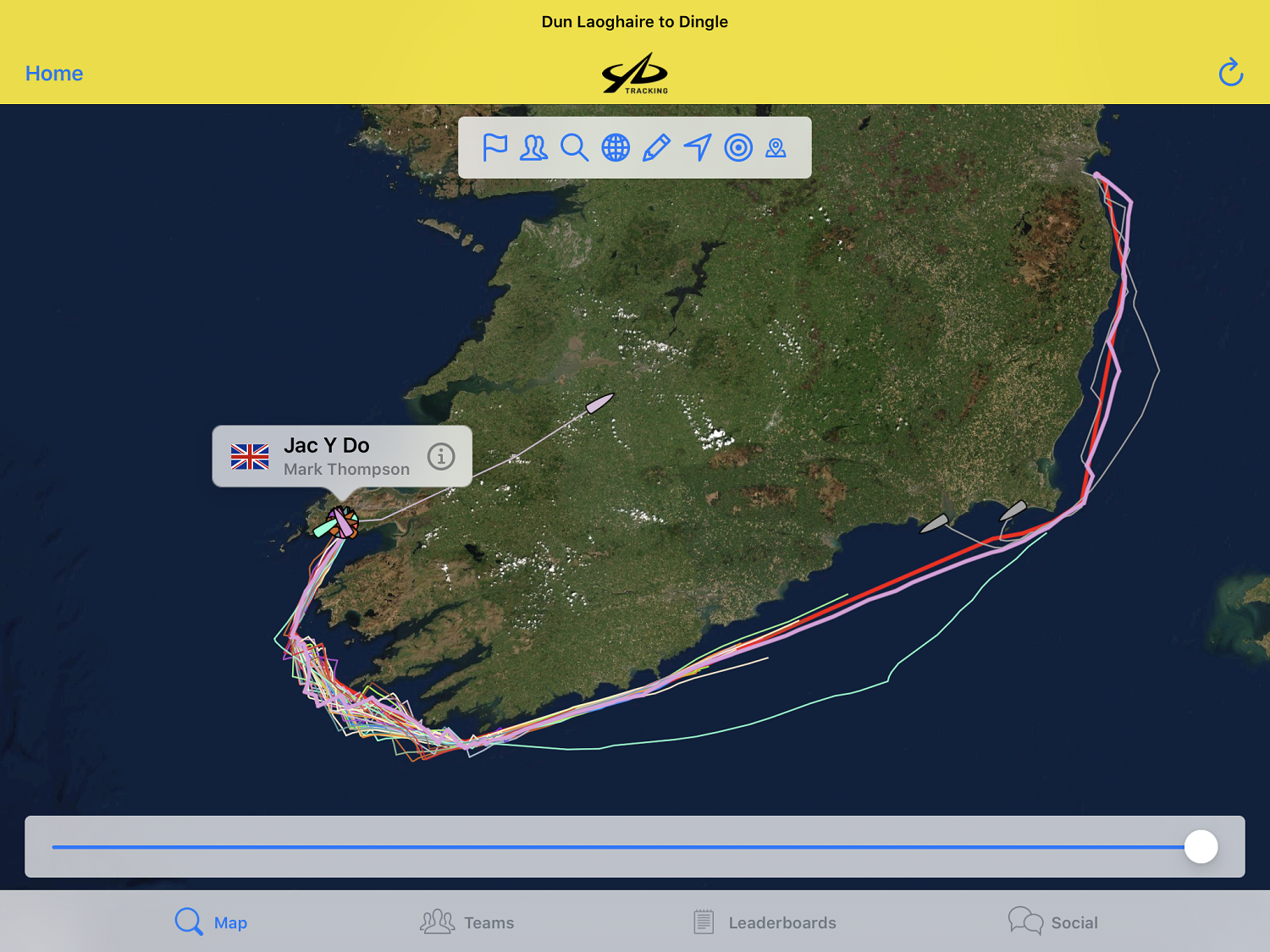 YB – Full course
YB – Full course
 English (UK)
English (UK) 